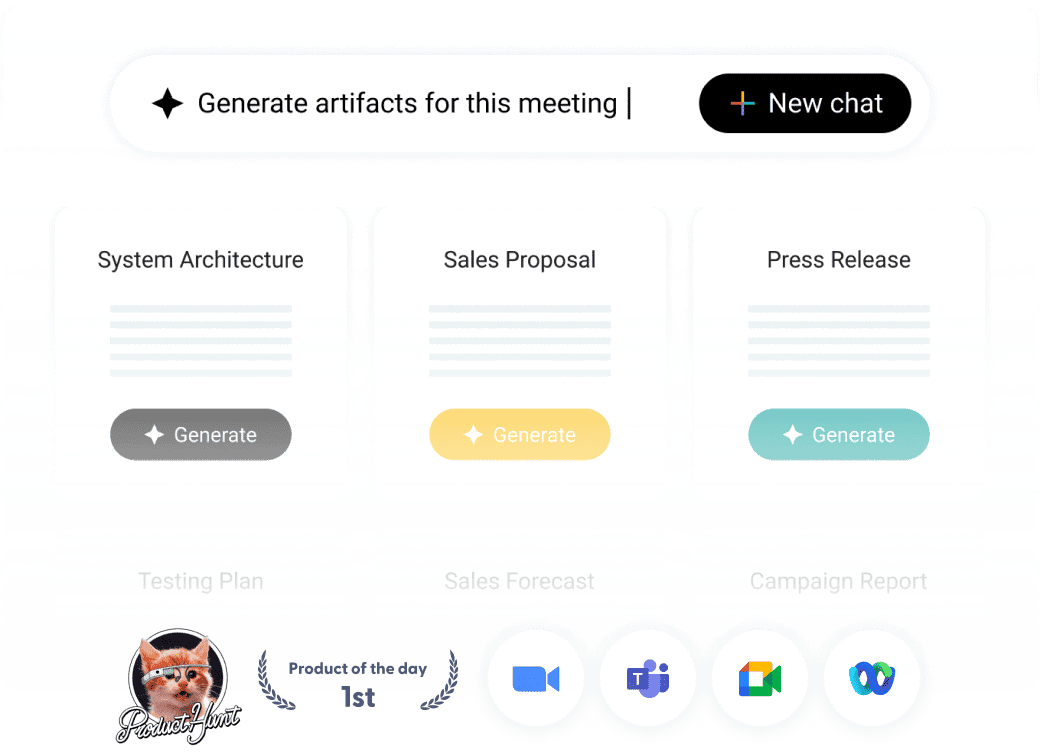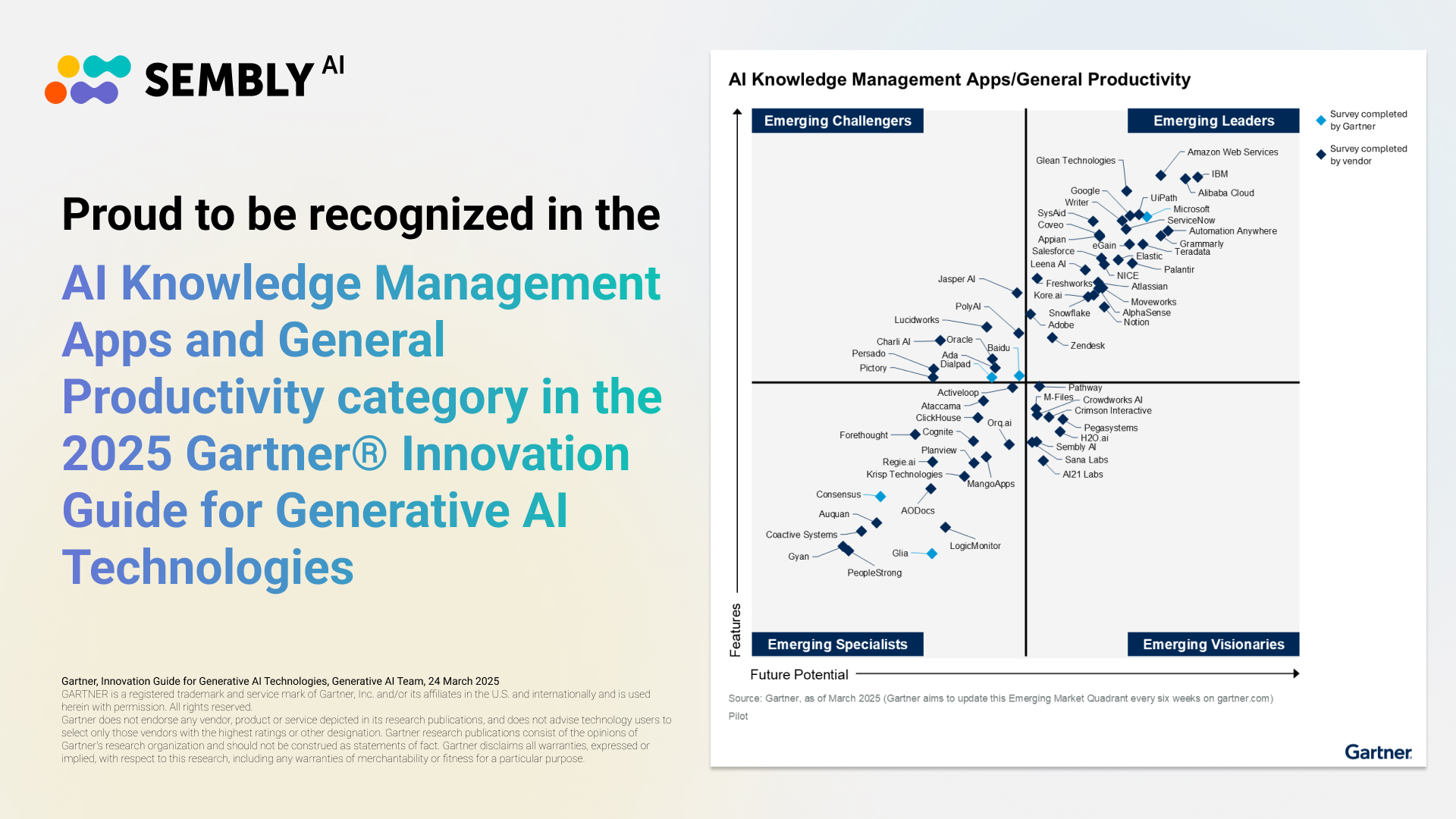Table of Contents
ToggleRecently updated on March 26th, 2025
Is your plan for 2025 to improve your product management processes? Do you strive to fine-tune your team and achieve higher results this year? You’re not alone! Many businesses have made a decision to improve internal operations when it comes to product management.
Building a product stack–an interconnected ecosystem of product management tools designed to optimize every stage of product management–comes with its unique challenges. Take the variety of software solutions, for instance. With the overwhelming number of tools on the market, how do you know which one you should choose? After all, your product team size, workflows, and long-term goals differ from others, and what one business benefits from might be a dubious investment for another.
This article outlines the most efficient product management tools you might consider using.
Role of Product Management Tools in Your Business Strategy
Product management tools have become a buzzword in the last decade. Their role is imperative in many business industries, focusing on internal operations and cross-team collaboration, and not just that.
Besides enabling smooth syncing across departments that often work remotely, modern tools have made huge progress in analytics and machine learning. They provide plenty of opportunities to discover actionable product insights on a budget.
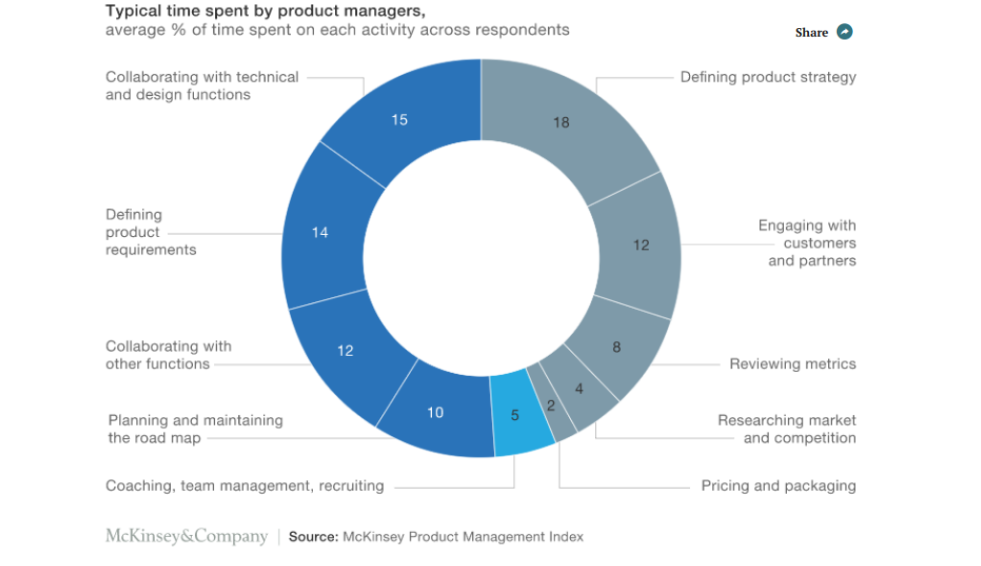
In addition to analytics, product management tools accelerate product delivery, empowering agile product teams to streamline product planning and execution. Product managers are involved in a wide range of tasks, managing complex projects, communicating, analyzing, prototyping, and getting ongoing feedback. That’s why your tool selection is crucial.
Check out these leading tools for product management broken down into essential categories to help you make an informed decision.
Key Categories of Product Management Tools
Project Management Tools
Unlike product management, project management operates on a tactical, granular level (see this comparative article for more detail). This requires tracking workflows, workstreams, and deadlines to ensure everything is in order and that one completed action enacts another. AI-driven project management software facilitates task management, sprint planning, and real-time collaboration. Check out these tools.
Asana
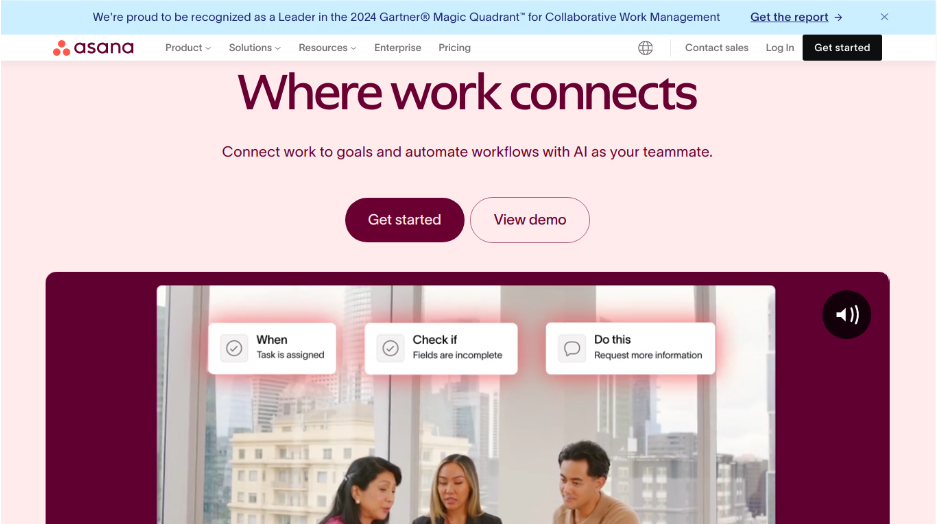
Asana is a popular tool among larger businesses. It offers high-level project tracking and team assignments and is known for its custom workflows and interactive dashboards. Project managers often choose Asana as their primary tool, justifying the choice because of its simplicity and overall efficiency.
Trello
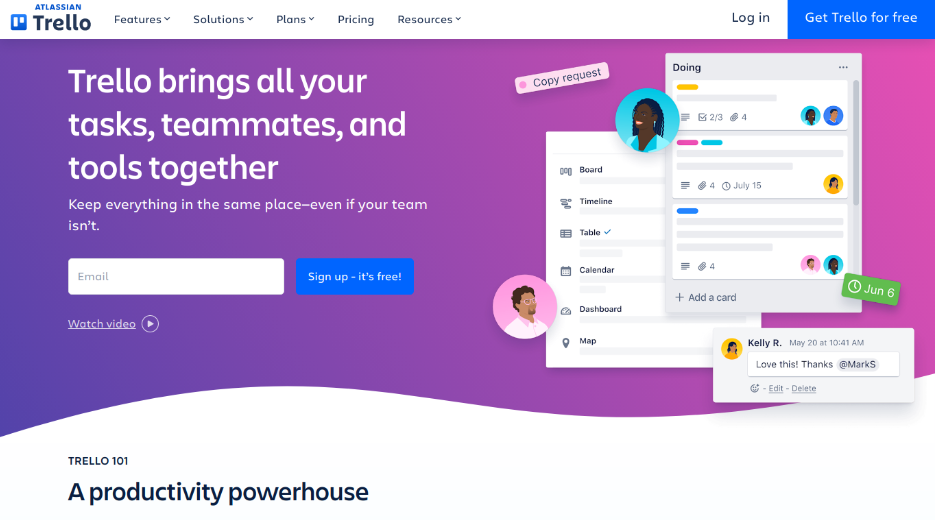
Trello is among the most simplified PMS tools, centering around a Kanban framework. This makes it a go-to app for small businesses and startups that prioritize operational efficiency and zero-cost features. It is hands down one of the best apps for visual task organization.
Jira
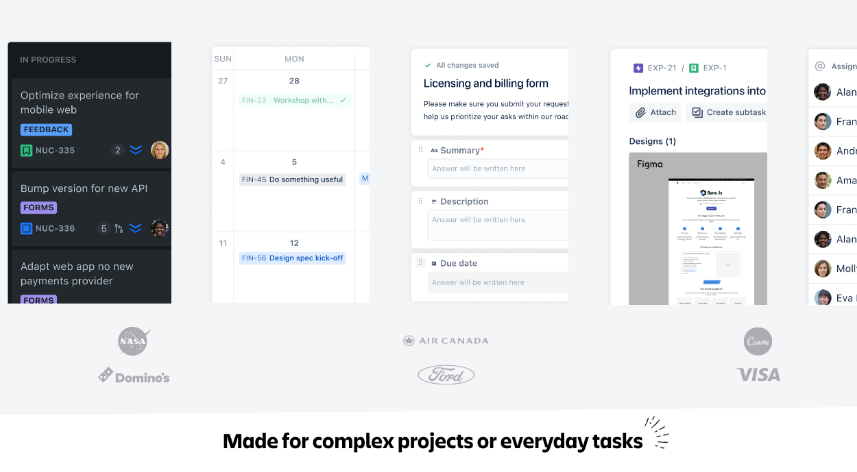
Jira is at the other end of the project management spectrum, being a first choice for advanced teams. What makes Jira rapidly expand? Its focus on cross-functional teams allows managers to create tasks triggered by certain conditions and rules, enabling various actions that help notify product teams, unlock new tasks, close tickets, and more.
Roadmapping Tools
The next category is road mapping tools. These programs help align product goals with long-term strategy and typically have additional features that other apps don’t have. Let’s take a closer look at these three tools.
Aha!
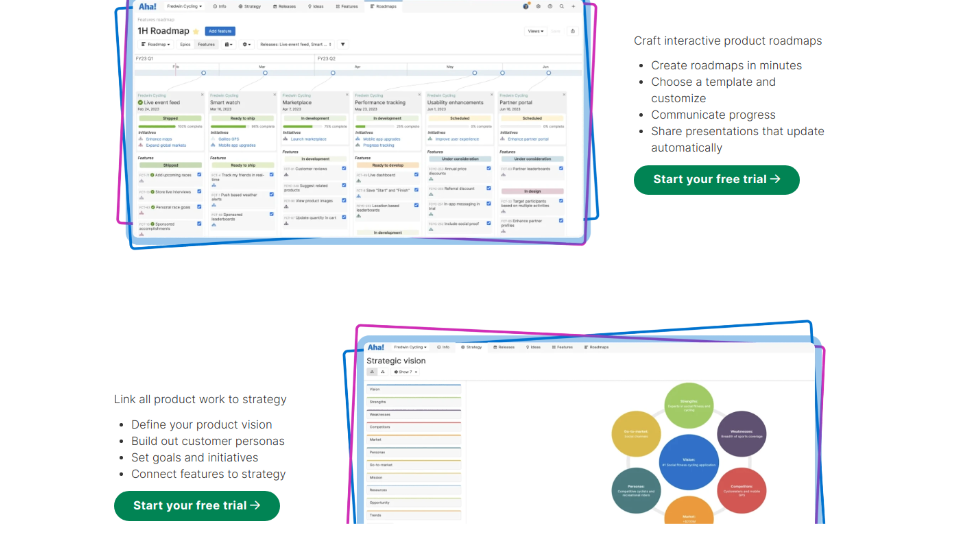
Aha! is primarily a product roadmap tool, but not exclusively. It offers advanced features like strategic planning, product vision outlining, portfolio management, and release tracking. Sophisticated though it might seem, Aha! is a leader for large enterprises.
ProductPlan
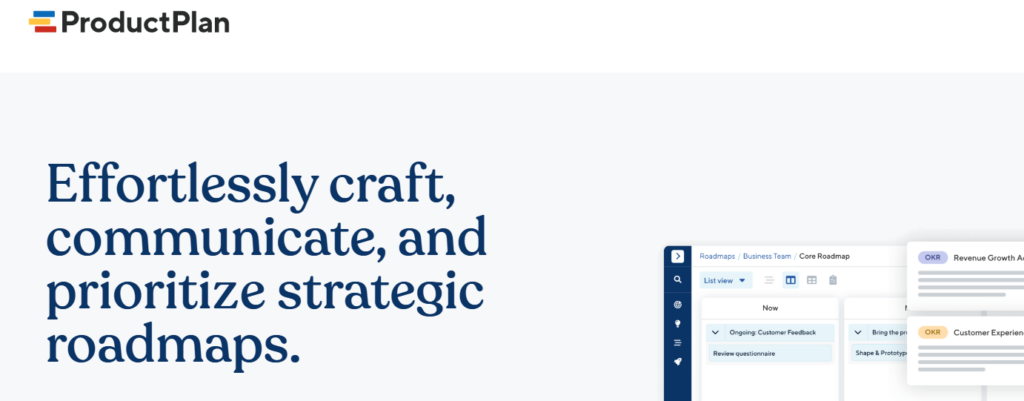
ProductPlan is an alternative to Aha! for smaller businesses. Its simple drag-and-drop interface with navigable features helps create visual roadmaps and share them with stakeholders in real time. ProductPlan is often a stepping stone to more complex programs.
ProdPad
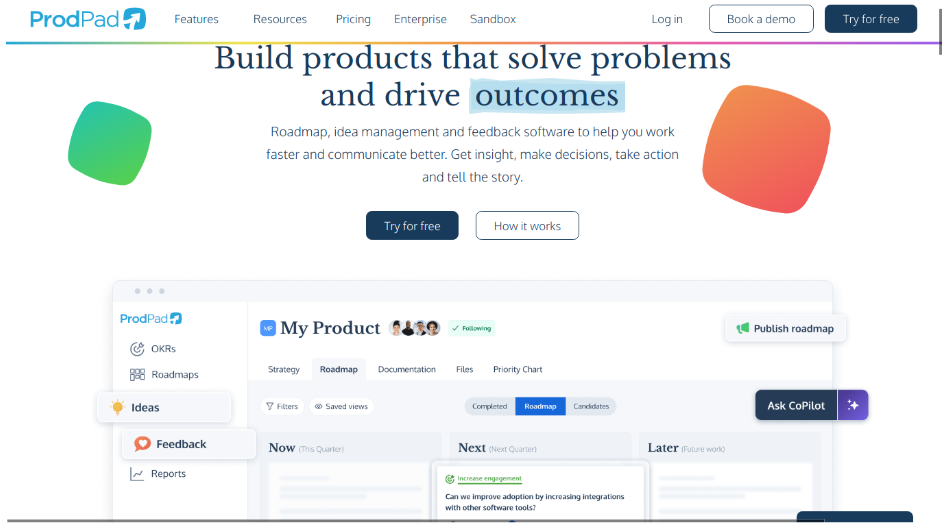
ProdPad is product roadmap software that excels at iterative product improvements. It combines road mapping with idea management and customer feedback collection, making it perfect for those dedicating significant time to client communication and surveying.
Communication and Collaboration Tools
Efficient information exchange channels keep every team member in the loop, letting them follow up with clients, address customer concerns, and ensure ongoing company gains. Making communication interactive and uncomplicated is a strategic move. Check out these essential tools to ensure smooth cross-functional collaboration.
Sembly
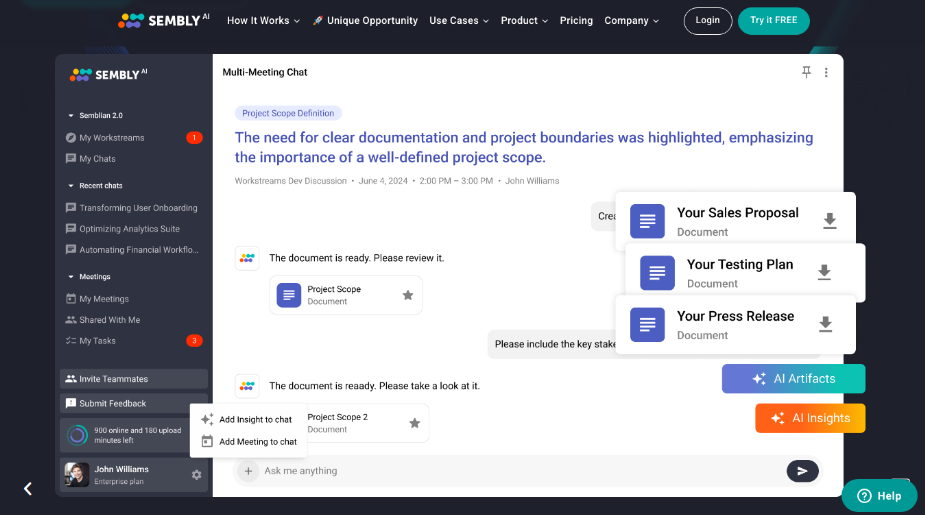
Sembly is an AI-driven meeting assistant. Its primary purpose is to catch, transcribe, and summarize discussions, making it one of the best product management tools on the market. Sembly is a must-have for businesses of any size, as it helps product managers, marketers, and other experts track progress, review accurate transcripts, create and evaluate action items, and follow the line based on internal and client communication.
Sembly AI provides more features that product managers can take advantage of. For example, its newest conversational AI agent makes meetings clearer and more insightful for any PM willing to step up their operational efficiency.
Semblian 2.0 optimizes your workload and handles numerous product management tasks with outstanding precision. You can pull any document via a single input in the chat, get a gap analysis report, structure a marketing copy, create interactive roadmaps, or get assistance related to any product development cycle stage. Need to refine user stories, generate sprint summaries, or prioritize backlog items? Semblian 2.0 has you covered with these tasks and beyond. Its power lies in assisting in drafting investor reports, synthesizing customer feedback, and aligning cross-functional teams by providing artifacts that would otherwise take days to complete manually.
These capabilities make Sembly AI your indispensable tool for strategic planning, data-driven decision-making, and streamlined execution across the entire product lifecycle.
Slack
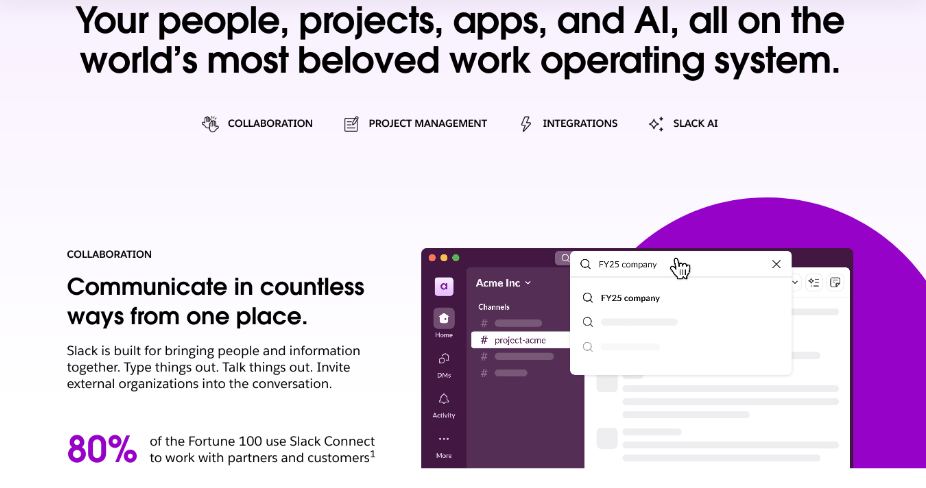
Slack has been a staple messaging platform for many brands because of its great functionality and interface. Its integration with tools like Sembly makes Slack a valuable app for instant text-based communication and follow-ups.
Microsoft Teams
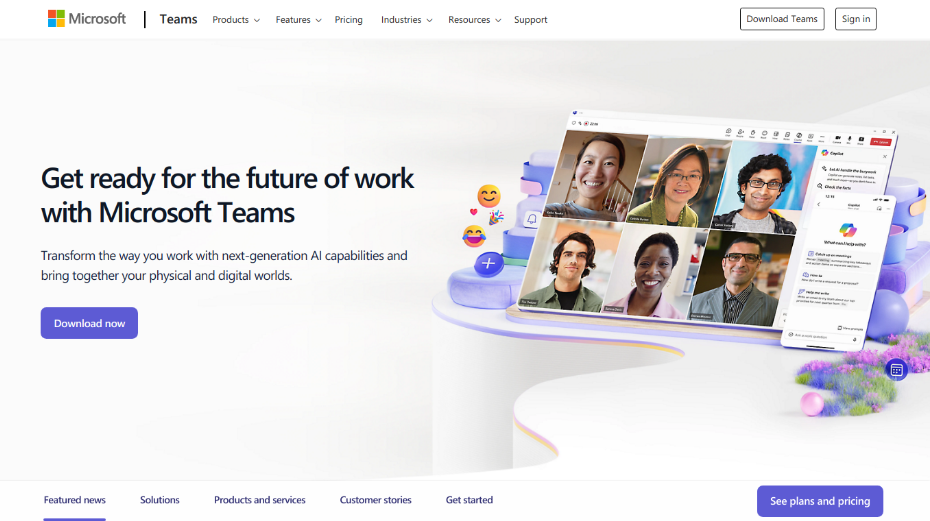
Enterprises using the Microsoft ecosystem mustn’t miss out on its proprietary video conferencing platform. Microsoft Teams features built-in file sharing and task tracking, making it a secure daily meeting app. MS Teams also works well with Sembly AI. Tune into calls and use Sembly AI to record and share high-quality meeting recordings and other items.
Analytics Tools
Product analytics tools work wonders if applied correctly. Product management experts use such apps to measure product performance and user engagement while dissecting marketing trends to build a practical and successful long-term product strategy. Consider these tools.
Google Analytics
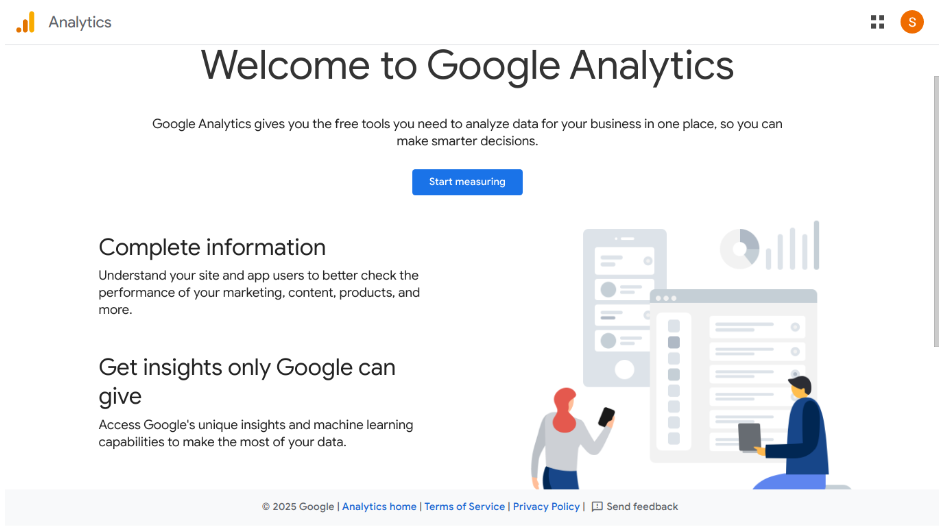
Google Analytics provides deep insights into web-based product user behavior, acquisition, and retention. Don’t make its simplicity push you away from Google Analytics. What it lacks in interface, it makes up for with its extensive crawling and scraping mechanisms, allowing you to find and study tremendous loads of data.
Mixpanel
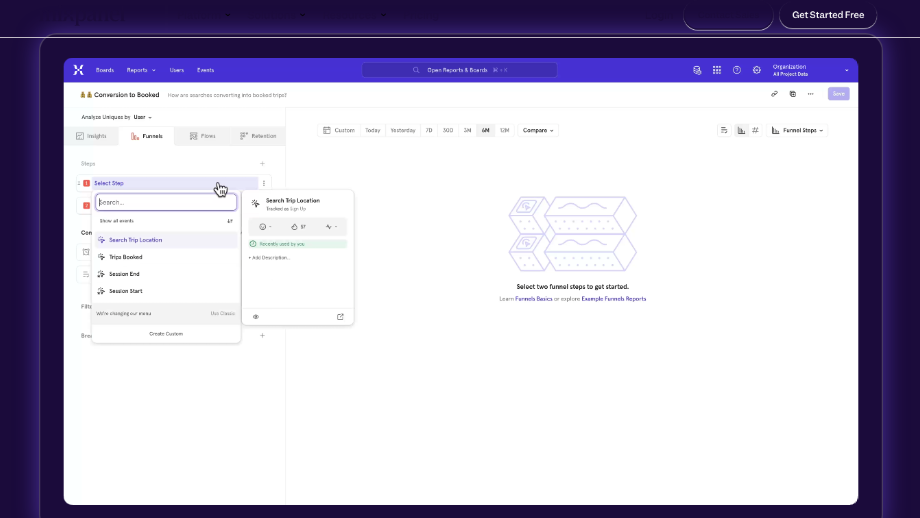
Mixpanel deviates from standard data analytics, focusing more on in-product analysis. It is ideal for understanding user flows, feature adoption, and funnel optimization. Mixpanel can help you better evaluate your strategies and how they lead to user retention and engagement. It’s a solid app for breaking data silos.
Heap
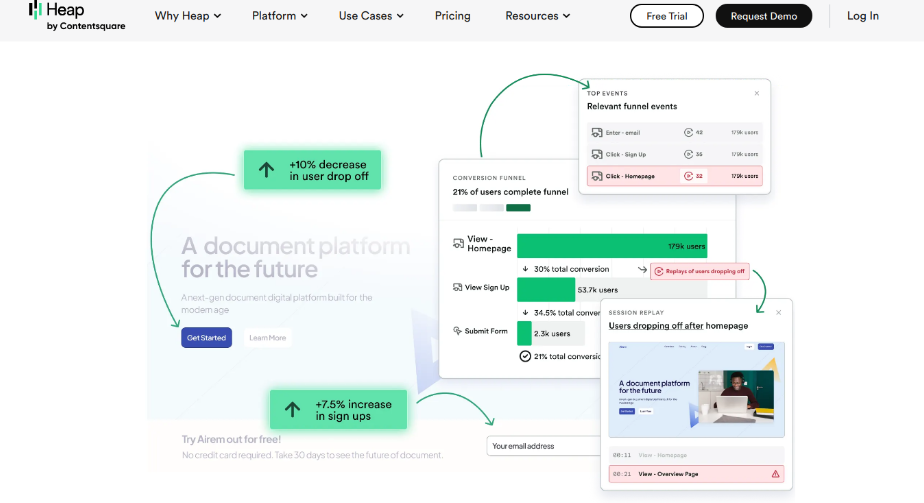
Heap automates event tracking and analyzes user interactions across multiple platforms, making it perfect for digital products. Although the tool requires a learning curve, it can be helpful when studying and perfecting your customer journeys.
Prototyping and Wireframing Tools
Prototyping, validating, and designing are indispensable in product management. Fortunately, there’s no shortage of tools to complete these stages efficiently. However, finding a product management prototyping solution might turn into a real quest. Have a look at the following tools.
Figma

Figma has multiplied its adoption rate since the world ushered in a new era of remote work. Figma is a cloud-based tool that allows real-time collaboration and makes tasks more doable for those scattered around the globe who must work together. Figma has been named one of the best design tools for prototyping, providing quite a few features for both Windows and macOS users.
Adobe XD
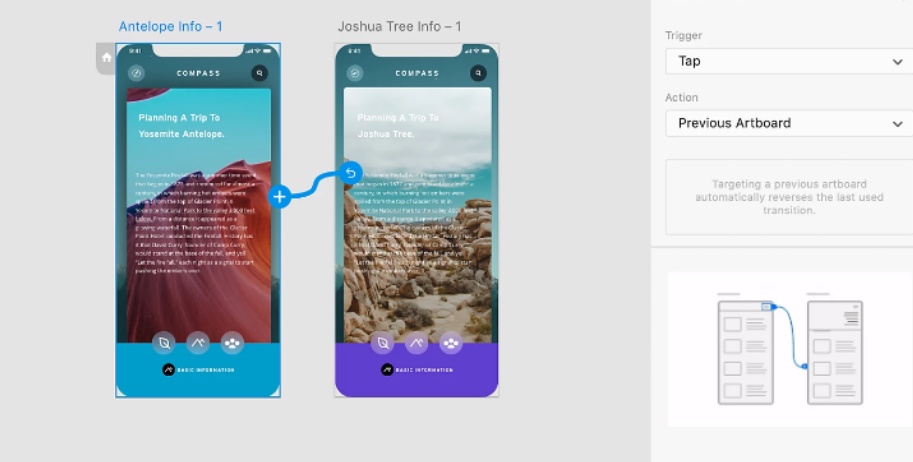
Adobe XD is a pain-free prototyping tool for low-fidelity wireframing. It has been a first-choice software for many professionals, primarily because it is part of an extensive Adobe ecosystem. Adobe XD empowers developers to execute tasks quickly without compromising quality.
Sketch
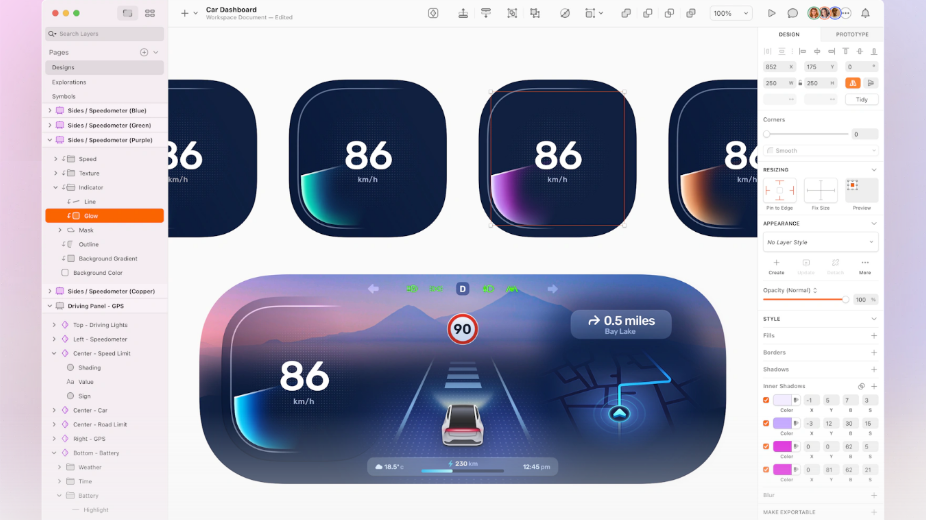
Sketch revolves around static wireframes, making it a solid choice for proficient design experts. Since Sketch is a macOS-based software solution, Apple users usually prefer it over other alternatives. In any case, it’s a high-rated tool in prototyping.
Feedback and Research Tools
Research is among the biggest challenges product managers encounter in their daily work. Thankfully, dedicated tools simplify the process of gathering customer insights for data-driven product decisions. They help product management collect and study user stories and decide whether the product can be developed and bring value or should be terminated and retired immediately.
Hotjar
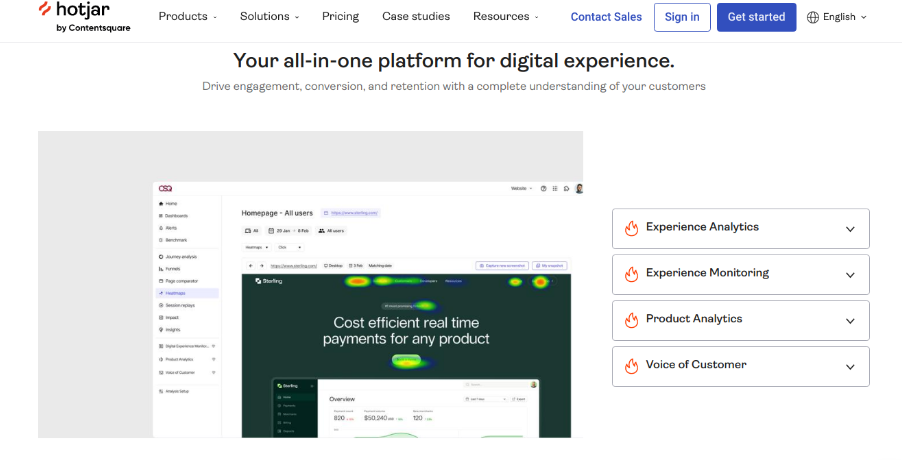
Hotjar is a popular app that combines heatmaps, session recordings, and surveys to reveal how users interact with your product. It’s a good choice for medium-to-large companies that want to deeply analyze large chunks of customer experience data.
SurveyMonkey

SurveyMonkey is a superb app for smaller businesses, especially those just starting. It provides customizable surveys for gathering quantitative and qualitative feedback from clientele and product teams. SurveyMonkey is easy to use and helps you create logic-advanced question types. It also features multiple visually appealing templates for any subject and audience type.
Qualtrics

Large firms will find Qualtrics the perfect tool for their needs. Qualtrics provides advanced capabilities like sentiment analysis and multi-channel user feedback collection for enterprise-grade research. It uses sophisticated algorithms and machine learning to maximize the collected data.
Must-Have Features in Product Management Tools

Scalability
As a product manager, you must consider choosing product management tools thoughtfully, keeping things like scalability in mind. Ensure your stack can grow alongside your team and product portfolio, offering key features for larger data sets, users, and integrations. Remember: the more steps ahead you think and plan, the higher the chances that your tool choice will end up efficient and save plenty of resources in the long run.
User-Friendly Interface
An interface is often a matter of taste. While colors and fonts aren’t that important, pay attention to the overall interface and ensure it is at least navigable and smooth. You don’t want to experience random lags when using the tool.
Luckily, most software solutions offer a free trial, so make sure to test it to see whether your team and you can get the hang of the tool and utilize it efficiently. Remember to prioritize intuitive designs that reduce onboarding time and improve team adoption rates.
Integration Capabilities
As you grow, your tool kit will expand. Make sure new product management software adoptions flow smoothly into the ecosystem. For example, product management tools like Sembly AI explicitly state their seamless integration capabilities with other CRM, analytics, and development platforms, so you can easily create a unified product stack. However, many programs require sifting through their FAQ sections, reading reviews, and even reaching out to clarify them. Don’t shy away from doing that.
Reporting and Analytics
Well-structured reports and analytics help you stay on track in a world crammed with data. AI-powered tools are especially helpful for product management, delivering valuable insights and profound visualization capabilities. AI-driven product management platforms make data significantly more accessible.
Best Practices for Using Product Management Tools

The golden rule is to compare product management software beforehand, choosing apps that can be useful throughout the entire product development lifecycle. Just keep in mind that not all product management tools are created equal, and select programs that will bring value to your tool stack.
Moreover, don’t forget that the entire team will have to use the software at some point upon integration. It’s best to onboard your product management team and provide regular training sessions to ensure employees maximize tool functionality. Periodically ask your team for input on the tool’s effectiveness, learning whether they find particular ones helpful or hard to work with. Use this feedback to fine-tune how the app is utilized.
Here are bite-sized practices to follow for the best result:
- Set up governance. Assign ownership for each tool to avoid overlapping responsibilities or underutilization.
- Use templates where possible. Leverage pre-built layouts to standardize a product development process and save time.
- Gravitate toward simplicity. Overloading your team with too many apps or complex features can lead to confusion. Avoid overly detailed workflows that can slow project progress.
Future Trends in Product Management Tools
Experienced product managers strongly believe the field will continue to evolve as technology and methodologies advance. We expect the industry to place a stronger emphasis on artificial intelligence. Product management tools will increasingly incorporate AI as it becomes fundamental in software development. They will predict market changes, prioritize key features, and improve decision-making.
Additionally, more tools for product managers will improve non-technical aspects. We can now see a massive spike in apps based on no-code, zero-code frameworks, helping teams manage various tasks more efficiently.
The proliferation of different software solutions will peak, leading to unified platforms that consolidate functionalities into all-in-one tools to reduce fatigue. This, in turn, will also drop the pricing of such programs, making them even more affordable for any company.
FAQs
How do I build a result-driven product stack for my team?
First, evaluate your business objectives and team’s workflows with pain points. Then, choose product management tools that align with these and support scalability, integration, and user-friendly interfaces. In general, prioritize categories like project management, road mapping, and communication in the beginning.
How can I integrate new tools into my existing ecosystem?
Consider building a product management tool list with strong integration capabilities. Test them during free trials and in isolation, verify compatibility with your current systems, and aim at those offering APIs or seamless connections to unify workflows efficiently.
Should small teams use paid tools?
Small teams can start with free or cheaper options like Trello, SurveyMonkey, or Sembly AI. Small businesses can transition to paid product management tools if scaling demands advanced features, such as analytics or AI-powered insights, that free versions don’t provide.
Introducing Semblian 2.0
- ✦ Multi-Meeting Chats
- ✦ AI Insights
- ✦ AI Artifacts
